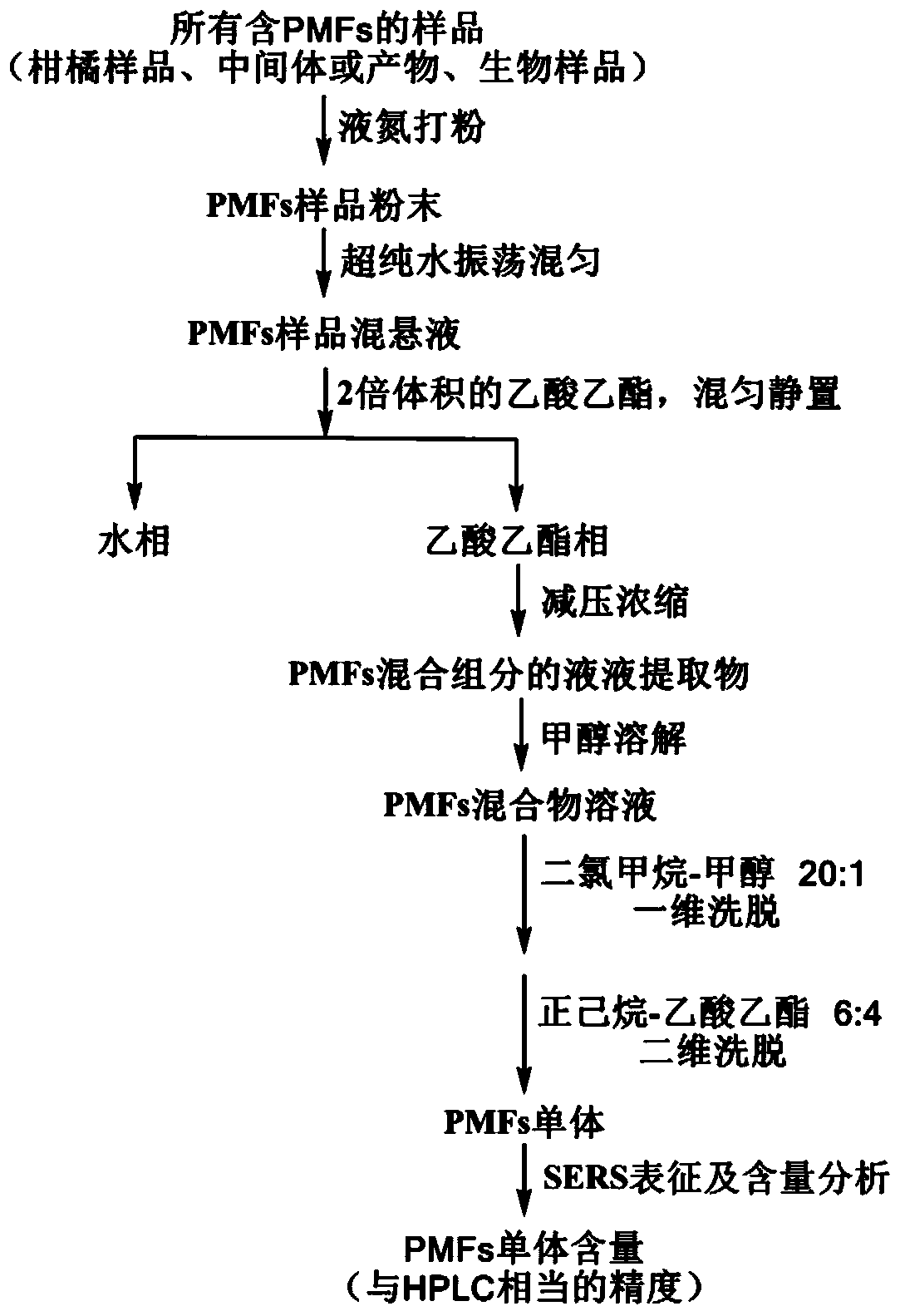A method for detecting polymethoxylated flavonoids
A polymethoxyflavonoid and spectral detection technology is applied in the field of detecting polymethoxyflavonoids, and can solve the problems of inability to detect mixtures with complex components and the like
- Summary
- Abstract
- Description
- Claims
- Application Information
AI Technical Summary
Problems solved by technology
Method used
Image
Examples
Embodiment 1
[0048] Embodiment 1, the detection of polymethoxylated flavonoids in the tangerine peel of Qingjian
[0049] according to figure 1 The process shown in the test is carried out.
[0050] (1) Peel off the satsuma mandarin pulp, cut the peel into thin strips, add liquid nitrogen, keep the peel in liquid nitrogen for 3 minutes, and grind the frozen peel into powder with a powder machine.
[0051] (2) Weigh 100mg of citrus peel dry powder in a clean beaker, then add 25mL of ultrapure water, shake and mix, then transfer to a clean liquid-liquid extraction bottle, then add 2 times the volume of ethyl acetate (50mL), Seal the bottle, vibrate and mix well, and let it stand for 2 minutes. The ethyl acetate phase and the water phase are separated due to different densities. The upper layer is the ethyl acetate phase, and the lower layer is the water phase; then the lower water phase is discharged to remove the citrus peel. Water-soluble pigments, polysaccharides, proteins, glycosides a...
Embodiment 2
[0055] Example 2. Sample detection of metabolites in mice fed nobiletin
[0056] according to figure 1 The process shown in the test is carried out.
[0057] (1) AJ mice were fed in metabolic cages, and AIN-76A mice were given standard food (adding 0.1% 5-desmethylnobiletin). The food jars were regularly replenished every day and all the feces samples of the mice were collected within a week, and the feces samples were pulverized with a powder machine.
[0058] (2) Weigh 100mg of mouse feces sample into a clean beaker, then add 25mL of ultrapure water, shake and mix well, transfer to a clean liquid-liquid extraction bottle, and then add 2 times the volume of ethyl acetate (50mL) , seal the bottle, vibrate and mix well, and then let it stand for 2 minutes. The ethyl acetate phase and the water phase are layered due to different densities. The upper layer is the ethyl acetate phase, and the lower layer is the water phase; then the lower water phase is discharged to remove fece...
PUM
 Login to View More
Login to View More Abstract
Description
Claims
Application Information
 Login to View More
Login to View More - R&D
- Intellectual Property
- Life Sciences
- Materials
- Tech Scout
- Unparalleled Data Quality
- Higher Quality Content
- 60% Fewer Hallucinations
Browse by: Latest US Patents, China's latest patents, Technical Efficacy Thesaurus, Application Domain, Technology Topic, Popular Technical Reports.
© 2025 PatSnap. All rights reserved.Legal|Privacy policy|Modern Slavery Act Transparency Statement|Sitemap|About US| Contact US: help@patsnap.com



